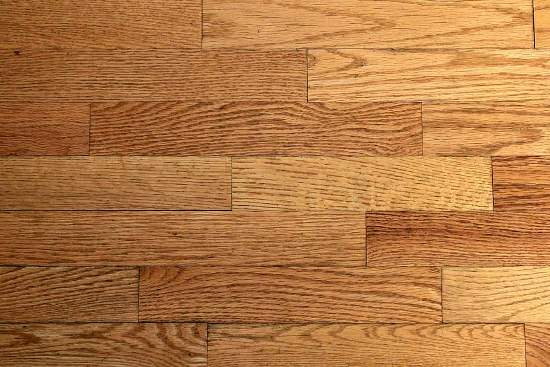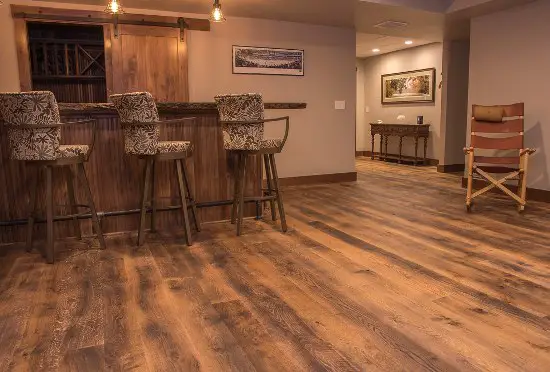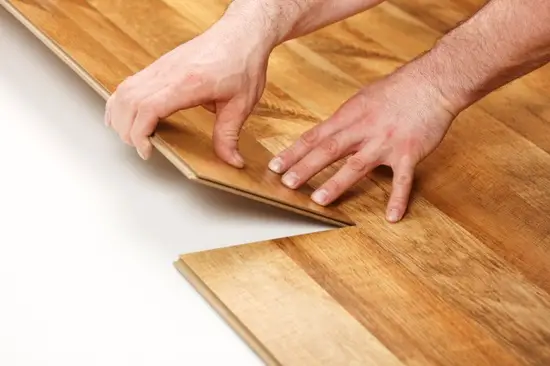Engineers design engineered wood floors to have a perfect balance of strength, stability, and wear resistance. But what’s the best way to install them? The most popular installation methods are gluing or floating. So is it better to glue or float an engineered wood floor?
In many cases, it will depend on your preference as well as the type of subfloor you’re using. I’ll explore these options here and give you all the pros and cons so that you can make an informed decision for your project!
Table of Contents
Is It Better To Glue Or Float An Engineered Wood Floor?
It is difficult to answer this question. Floating your floor is different from gluing it to the ground, and it depends on the type of wood.
If you have solid wood, you should glue it to avoid moving around too much. But if your flooring is engineered wood, I’ve learned that you can just use a nail or something to make sure it stands on its own.

There are different ways to fix an engineered wood floor depending on its damage and why you want to fix it. I would recommend gluing down the floor because that’s what works best for me.
Using an adhesive to glue down the planks meaning they cannot move. The boards can stick to the concrete’s rough surface, which means that there will be fewer gaps or cracks.
Floating your engineered wood floor means that the floor can move. Floors will expand and contract with weather changes. Floors can shift if you install the planks incorrectly. Floors are not good for kitchens or laundry rooms because heavy appliances will cause them to move.
What Are The Good And Bad Sides Of Gluing An Engineered Wood Floor?
Good Sides
Offering The Most Traditional Look And Feel Of Hardwood
There are many good sides to gluing engineered wood. One is that it can offer a traditional look and feel of hardwood.
Another is that it might sound awkward or spongy when you walk on the floor, but if you use glue for installation, it will not make any noise or feel squishy. It also feels more natural than floating floors do.
For these reasons, this type of flooring is very popular today, and many people like to install it in their homes, and I am one of them.

Less Chance Of A Floor Shift
The floor is glued, which means that it is more attached to the wood below. If you use nails or other methods, your floor can come loose. But from my experience, in case you glue it down, your floors will not sound hollow or spongy when you walk on them – just like a hardwood floor.
No Need For A Vapor Barrier
When you glue the wood floor, it helps keep water out. Most floors that are glued need no other protection.
Bad Sides
Take Much Time To Complete
To put down glue, you need to make sure the floor is even. It cannot be more than 3/16 of an inch high or low. The floor needs to be completely clean and dry too. Any water from cleaning or unseen water problems can cause problems with your planks in a few days after installation.

Not Advised for DIY
In case glue gets on the top of the floor or between boards, you need to clean it up immediately. It is hard to clean up after it has dried. You may need an expert to help you if you do not know how to do so, but it might be messy if you try this yourself.
Difficult to Remove Glued Wood Floorings
You might be tired of the type of engineered wood flooring and want a change. You will need a lot of patience and skill to get it out, though. A glued-down floor is harder to remove, so any future removal may also be tough.
What are the Good and Bad Sides of Floating An Engineered Wood Floor
Good Sides
Versatile Installation
Floating floors are easy to install because they don’t need as much material. You can put them on top, below, or on the ground.
They are a good choice when you need to put them over a heating system. Floating floors work with many subfloors, including plywood, ceramic tile, and linoleum flooring.
Easy installation
Many engineered floors come with “click lock” systems. This system locks the boards together, so you do not need fasteners or adhesives. Each board has a tongue and groove, which means it snaps into place when you click it in.
DIYers like us can also find this installation method interesting, and you can get work done in a lot less time than with other methods.
Easy To Pull Up Later On
Floating wood floors are easy to install. They are also easy to take out. As you know, each board has its tongue and groove, so they lock together easily. So if you want to remove the floor, just snap it up and then take it away with no problem!
Bad Sides
Only Recommend For Flat Substrate
Floating floors need a flat floor. If the floor is not flat enough, walking on it will sound hollow or tinny. So make sure that your floor is level and even.

Underlayments Are Traditionally Used
Floating floors need a good quality underlay. One is to act as a moisture barrier, and another is to act as a sound-dampener. It can also reduce the chance of noise when walking on it. If an underlay doesn’t exist, you might not support weight or movement on the floor.
Conclusion
So, is it better to glue or float an engineered wood floor? Only you can answer this question depending on your floor’s condition and your preferences. However, it is better in most cases to glue an engineered wood floor instead of floating.
I hope this article has helped you to make a decision about the best way to install your new engineered wood floor, understand the difference between glue and floating a wood floor, as well as how to go about installing either type.
If any points are not clear, or if you have other questions, please don’t hesitate to contact me, and I’ll be happy to answer them for you! Thank you again for reading my blog post today. Feel free to like/share with friends and comment below on how your installation process went!
Related Post:
- Precise Guide On How To Rehydrate Wood Floors
- How To Remove Tar Paper From Wood Floor? Easy Removal Ways
- Get Some Helpful Tips For How To Fix Uneven Stain On Hardwood Floors
- How To Get Permanent Marker Off Wood Floor? – Step-By-Step Guide From The Experienced!
